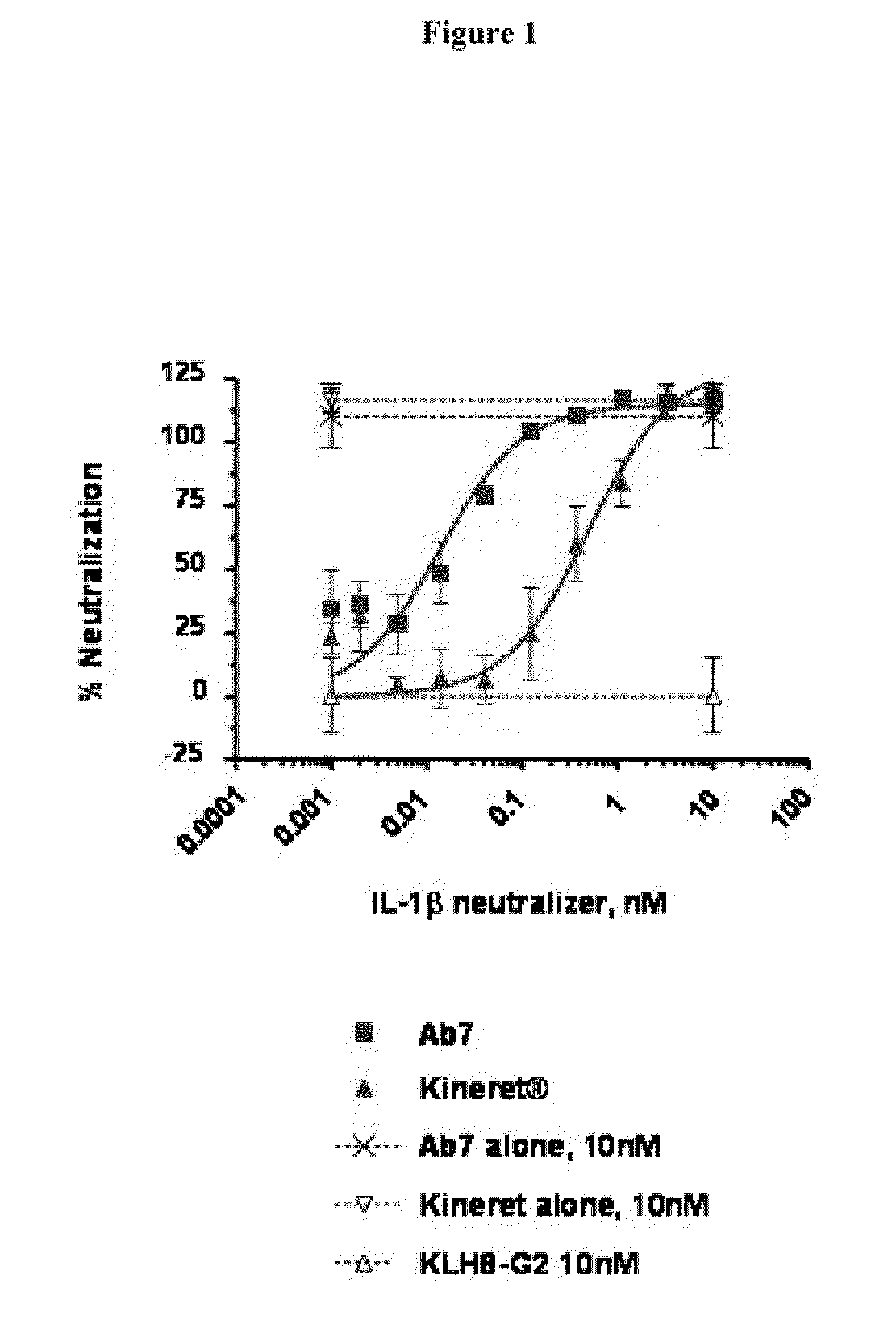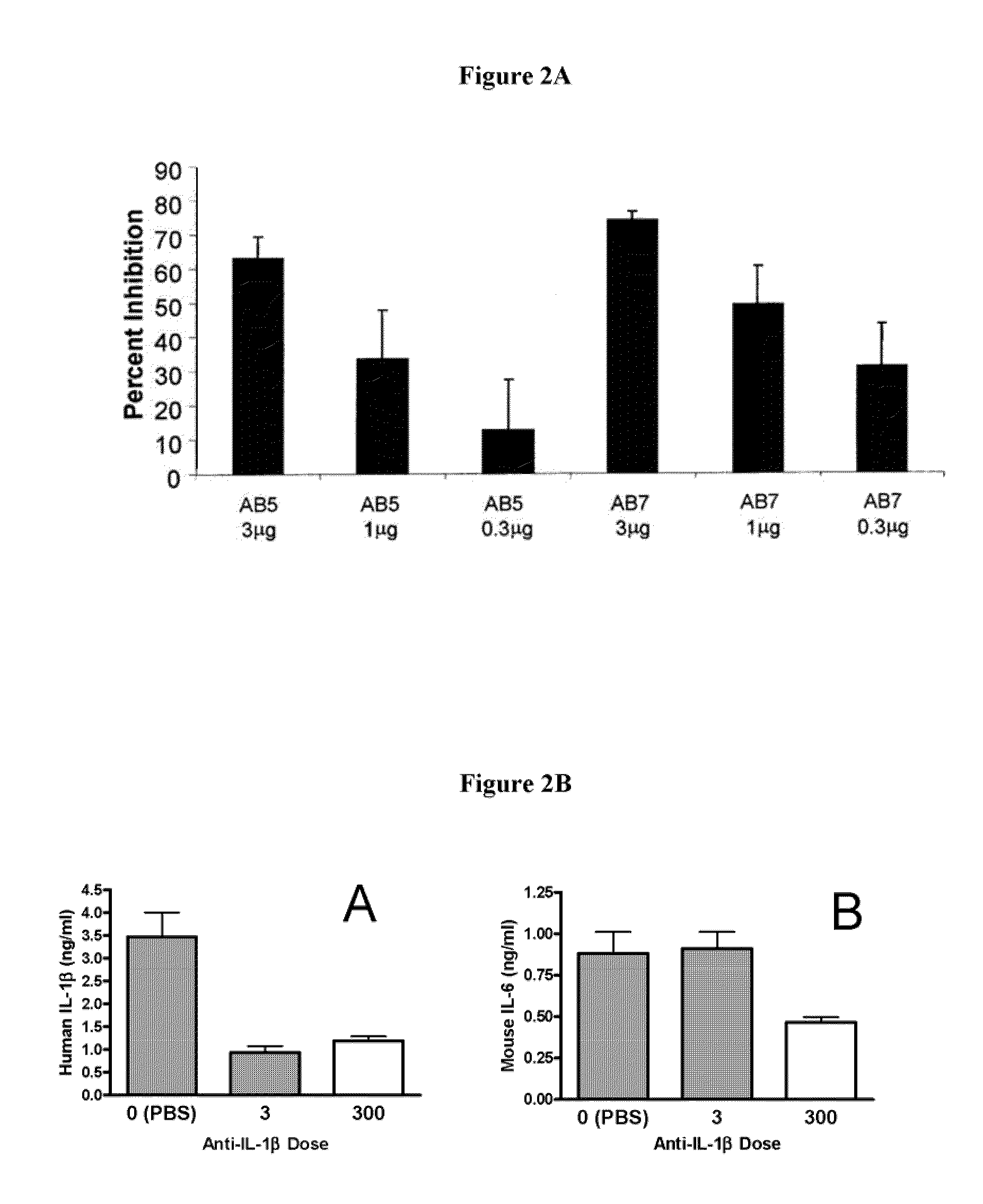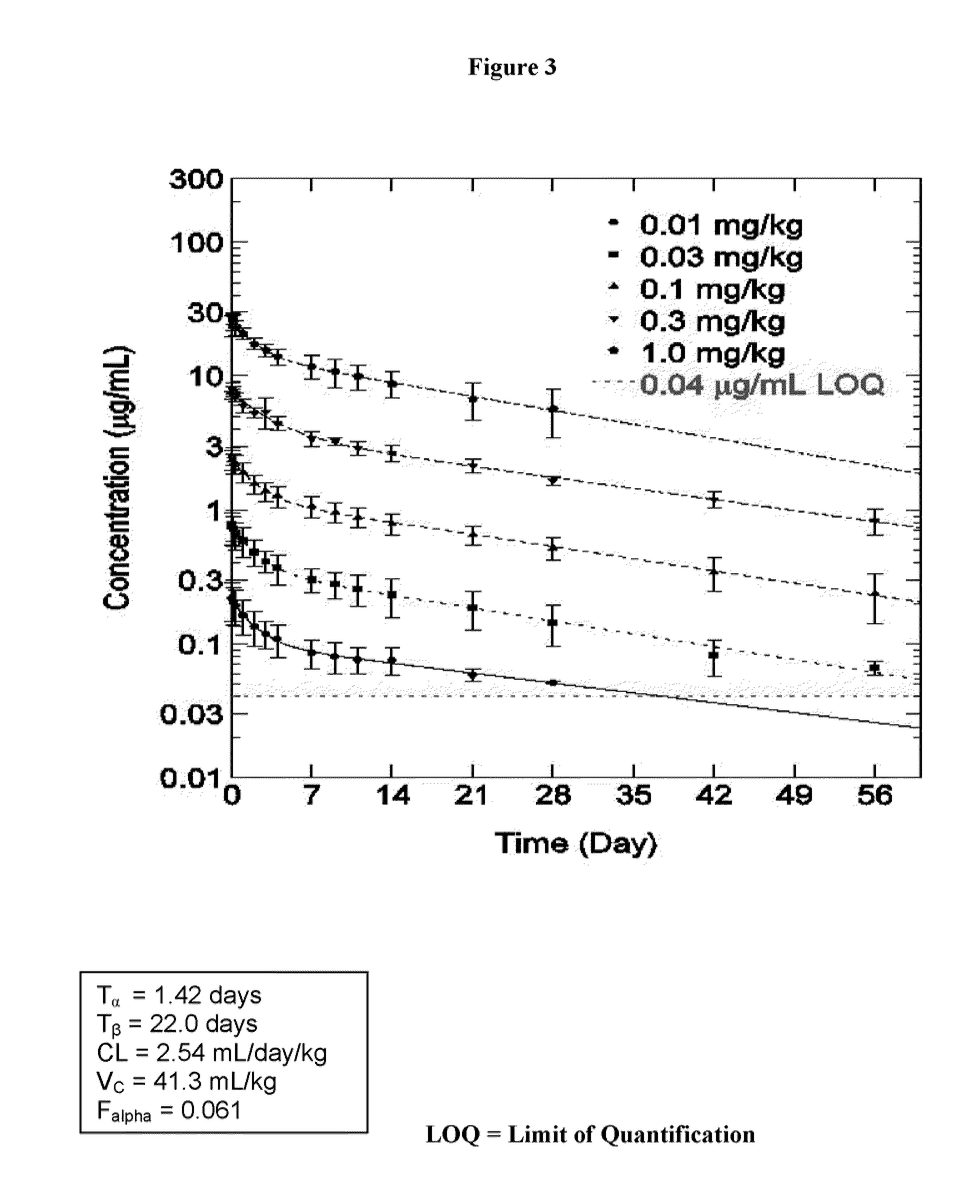Methods for treating IL-1beta related diseases by administering an anti-IL-1beta antibody
a technology of il-1beta and antibody, which is applied in the field of methods for treating il-1beta related diseases by administering an anti-il-1beta antibody, can solve the problems of increased blood glucose level, decreased amount of secreted insulin, and increased so as to improve glycemic control, improve hemoglobin a1c, and reduce fasting blood sugar level
- Summary
- Abstract
- Description
- Claims
- Application Information
AI Technical Summary
Benefits of technology
Problems solved by technology
Method used
Image
Examples
example 1
Inhibition of IL-1β Using a High Affinity IL-1β Antibody in an In Vitro Cell Based Assay, with IL-1 Induced Production of IL-8 as a Read-Out
[0238]The inhibitory effect of an IL-1β-specific antibody was compared to a non-antibody inhibitor of the IL-1 pathway, Kineret® (anakinra), which is a recombinant IL-1 receptor antagonist. Fresh, heparinized peripheral blood was collected from healthy donors. 180 μl of whole blood was plated in a 96-well plate and incubated with various concentrations of the antibody AB7 (U.S. application Ser. No. 11 / 472,813, WO 2007 / 002261) and 100 pM rhIL-1β. For anakinra-treated samples, anakinra and rhIL-1β were combined 1:1 prior to mixing with blood. Samples were incubated for 6 hours at 37° C. with 5% CO2. Whole blood cells were then lysed with 50 μl 2.5% Triton X-100. The concentration of interleukin-8 (IL-8) in cleared lysates was assayed by ELISA (Quantikine human IL-8 ELISA kit, R&D Systems) according to manufacturer's instructions. IL-8 concentratio...
example 2
In Vivo Inhibition of the Biological Activity of Human IL-1β Using IL-1β-Specific Antibodies, as Measured by the Impact on IL-1β Stimulated Release of IL-6
[0241]To confirm the in vivo efficacy of AB7, its ability to block the biological activity of human IL-1β was tested in a murine model. Details of the assay are described in Economides et al., Nature Med., 9: 47-52 (2003). Briefly, male C57 / B16 mice (Jackson Laboratory Bar Harbor, Me.) were injected intraperitoneally with titrated doses of AB7, another IL-1β antibody, AB5, or a control antibody. Twenty-four hours after antibody injection, mice were injected subcutaneously with recombinant human IL-1β (rhIL-1β) (from PeproTech Inc., Rocky Hill, N.J.) at a dose of 1 μg / kg. Two hours post-rhIL-1β injection (peak IL-6 response time), mice were sacrificed, and blood was collected and processed for serum. Serum IL-6 levels were assayed by ELISA (BD Pharmingen, Franklin Lakes, N.J.) according to the manufacturer's protocol. Percent inhib...
example 3
Effect of Anti-IL-1β Antibodies in a Human Islet Cell Assay System
[0244]As an in vitro model, human islet cells are isolated and then treated with high glucose levels to mimic the Type 2 diabetic environment. Anti-IL-1β antibodies may be used in the islet cell system to examine the effect on beta cell function (insulin release in response to glucose), beta cell proliferation and apoptosis.
[0245]Islets are isolated from the pancreases of multiple human organ donors with no history of diabetes or metabolic disease as described (Linetsky et al., Diabetes 46:1120-1123, 1997; Oberholzer et al., Transplantation 69:1115-1123, 2000; Ricordi et al., Diabetes 37:413-420, 1988, Maedler et al., Proc. Natl. Acad. Sci. USA 101:8138-8143, 2004; WO 2004 / 0002512). The islets are then cultured on extracellular matrix-coated plates derived from bovine corneal endothelial cells (Novamed Ltd, Jerusalem), allowing the cells to attach to the plates and preserving their functional integrity. The islets are...
PUM
 Login to View More
Login to View More Abstract
Description
Claims
Application Information
 Login to View More
Login to View More - R&D
- Intellectual Property
- Life Sciences
- Materials
- Tech Scout
- Unparalleled Data Quality
- Higher Quality Content
- 60% Fewer Hallucinations
Browse by: Latest US Patents, China's latest patents, Technical Efficacy Thesaurus, Application Domain, Technology Topic, Popular Technical Reports.
© 2025 PatSnap. All rights reserved.Legal|Privacy policy|Modern Slavery Act Transparency Statement|Sitemap|About US| Contact US: help@patsnap.com



